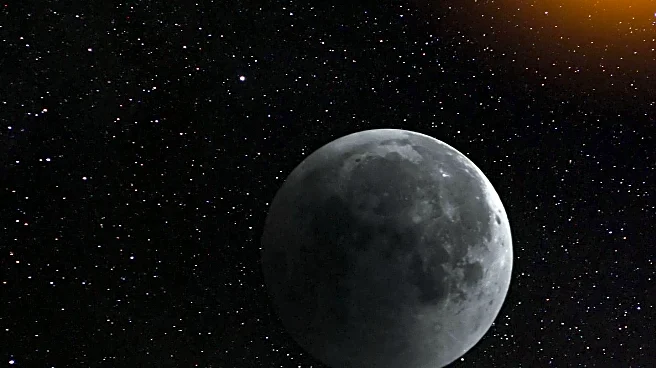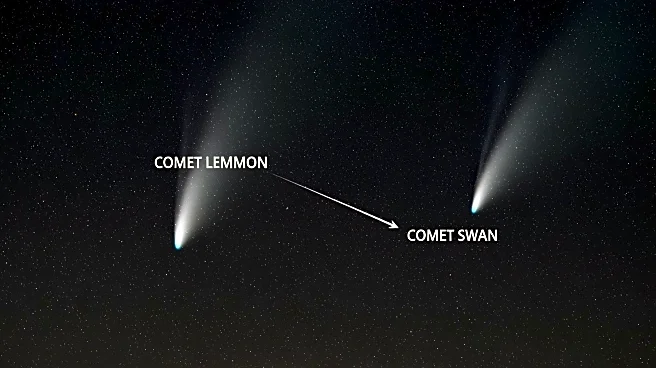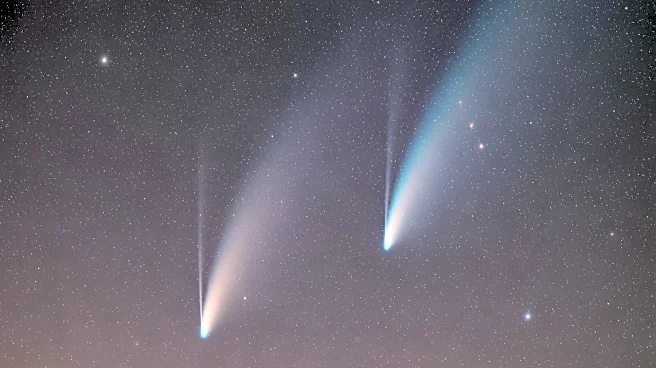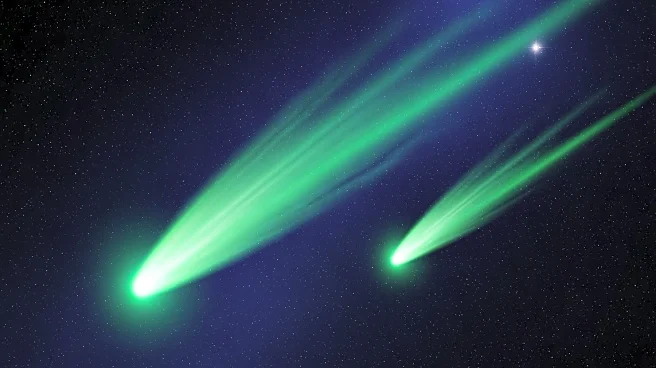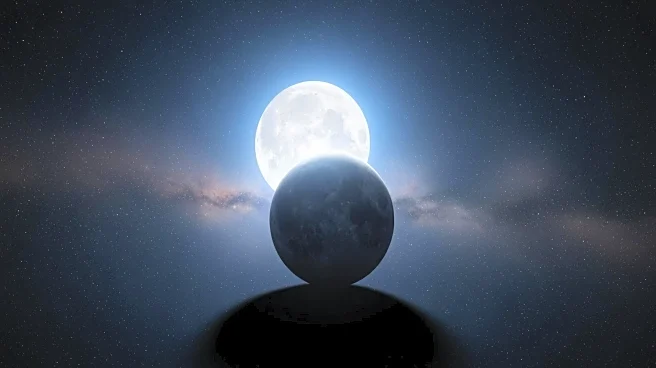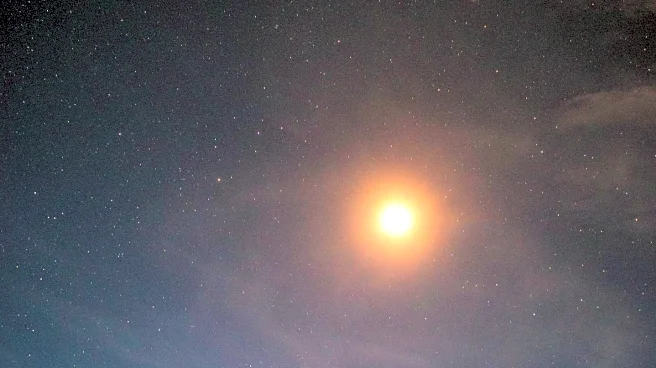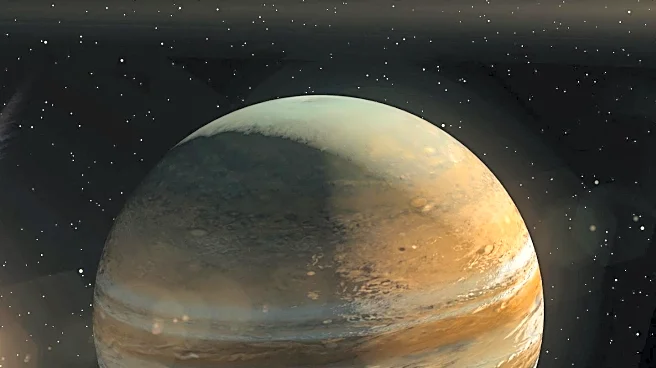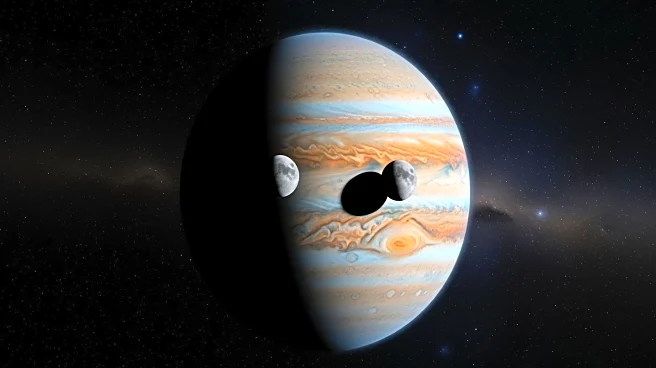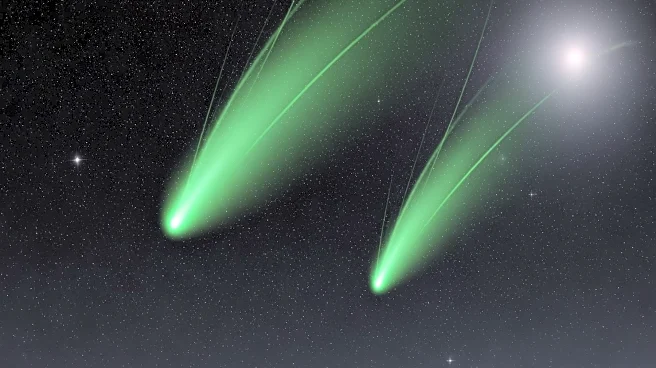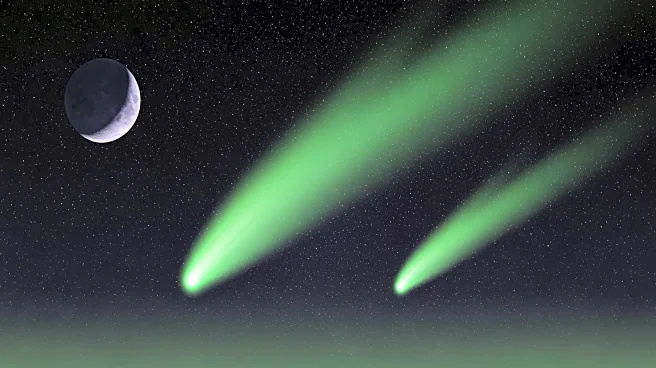What's Happening?
In the early morning hours of October 18, a celestial event is taking place as Venus and the Moon align closely in the constellation Virgo. Venus, shining brightly at a magnitude of -3.9, appears as a 94% illuminated gibbous phase. Meanwhile, the Moon is a delicate
4% illuminated waning crescent, positioned 4 degrees west of Venus. This alignment is visible before sunrise, offering a spectacular view for sky watchers. Additionally, the double star Porrima, or Gamma Virginis, is located below the Moon and Venus, providing an extra point of interest for those with a clear eastern horizon. The Moon is expected to pass 4 degrees due south of Venus at 6 P.M. EDT.
Why It's Important?
This celestial event is significant for both amateur and professional astronomers as it provides an opportunity to observe the dynamics of planetary and lunar movements in the night sky. Such alignments are not only visually stunning but also offer educational insights into the workings of our solar system. For the general public, events like these can spark interest in astronomy and science, encouraging people to learn more about the universe. The visibility of the double star Porrima adds an additional layer of interest, as it is a well-known binary star system that can be observed with a telescope.
What's Next?
Sky watchers and astronomers are encouraged to take advantage of this event by observing the alignment with telescopes or binoculars for a clearer view. As the Moon continues its orbit, it will move away from Venus, and the next significant celestial event will be the crossing of Io, Europa, and their shadows across Jupiter. Observers should also look forward to other upcoming astronomical events as detailed in the Sky This Week column.
